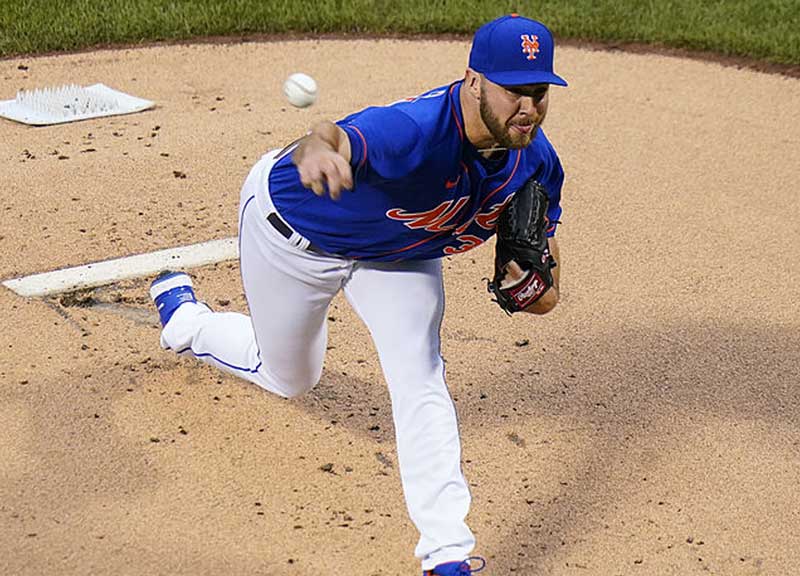Effective hitting in baseball is more than just physical prowess; it’s about mental preparation and strategy. By the time a batter steps into the batter’s box, they should have already processed a wealth of information and formulated a plan of attack. Let’s delve deeper into the mental aspects of preparing for a successful at-bat.
Assessing the Pitcher
Before you even step into the batter’s box, you should be gathering valuable intel from the dugout. Observe the pitcher closely:
- Handedness and Delivery: Determine if the pitcher is right or left-handed. Take note of whether they throw from the first or third base side of the rubber, and their arm angle (over the top, 3/4, sidearm).
- Fastball Characteristics: Evaluate the pitcher’s fastball. Is it firm, average, or below average in velocity? Does it have movement, such as a cut or sink? Pay attention to whether they can consistently throw it for strikes.
- Pitching Location: Analyze the pitcher’s tendency to throw to a particular side of the plate.
- Off-speed Pitches: Study the off-speed pitches, noting their crispness, type, and accuracy. Pitchers often reveal their pitch selection during warm-ups, using their glove to communicate with the catcher.
- Previous Knowledge: Check if anyone on your team has faced this pitcher before or if your coach has gathered data on their tendencies, especially in specific counts or with runners on base.
In-Game Assessment

As you watch the pitcher face the first batter, pay close attention to their performance. When the batter returns to the dugout, inquire about what they observed, including the pitch movement and the pitcher’s targeting. This real-time information can be invaluable in formulating your hitting strategy.
On-Deck Circle Preparation
As you step into the on-deck circle, you should already have a clear hitting strategy in mind. Your approach should be tailored to the game situation:
- Game Situation: Consider the scenario. Are there runners on base requiring a bunt, a runner on second base to advance, a runner on third with less than two outs to drive home, or no runners on base with the goal of reaching base?
- Fastball Assessment: Based on your observations, determine the nature of the pitcher’s fastball and their ability to throw it for strikes.
Facing a Sinker-Ball Pitcher
When dealing with a sinker-ball pitcher, it’s crucial to have a specific approach:
- Pitch Location: Sinkers aim to induce ground balls, so anticipate pitches down and in to righties (or away from lefties, with a right-handed pitcher). However, they might also throw sinkers to their glove side.
- Hitting Strategy: Be mentally tough. These pitchers want ground balls. Look for sinkers up and over the plate. Patience is key; when you get a sinker up, it will flatten out, and you can drive it.
- Right-Handed Hitters: Focus on driving the ball back up the middle and stay through the sinker. Avoid rolling the ball over or hitting weak grounders to the left side.
- Left-Handed Hitters: Aim to stay on the baseball and drive it into the left-center gap. Avoid pulling off the ball, which leads to grounders to the right side.
Facing Other Pitchers

For left-handed pitchers or right-handers relying on velocity or deception, your hitting strategy may differ:
- Location Focus: Typically, look for pitches on the outer half of the plate since most off-speed pitches and a significant portion of fastballs are thrown away.
- Consistency is Key: Don’t change your approach even if the pitcher manages to paint the inside corner with one pitch. Trust your strategy and adjust as necessary.
- Good Mechanical Position: Staying focused on the outer half of the plate keeps you in a solid mechanical position with your front shoulder intact.
- Adjustment Capability: If you focus on the outer half and a pitch comes inside, you can react effectively by bringing your hands in and getting the barrel to the ball.
Other Hitting Strategies
While the strategies mentioned above are common, there are a few more to consider:
- Adjust Inside: Focus on looking for pitches on the middle of the plate and adjust as needed. This simplifies your mindset and minimizes physical adjustments for pitches on the outer part.
- Velocity Hunting: Concentrate on identifying hard pitches (fastballs, sinkers, cutters, sliders) as they’re easier to adjust to. This strategy reduces the chance of being caught in between pitches.
In all cases, the key is commitment. Stick to your chosen approach when facing the pitcher, as even a suboptimal approach is better than having no mental approach at all. Remember that mental preparation is a crucial part of becoming a successful hitter in baseball. By studying the pitcher, assessing the game situation, and crafting a personalized hitting strategy, you can improve your chances of making productive plate appearances and helping your team succeed.
